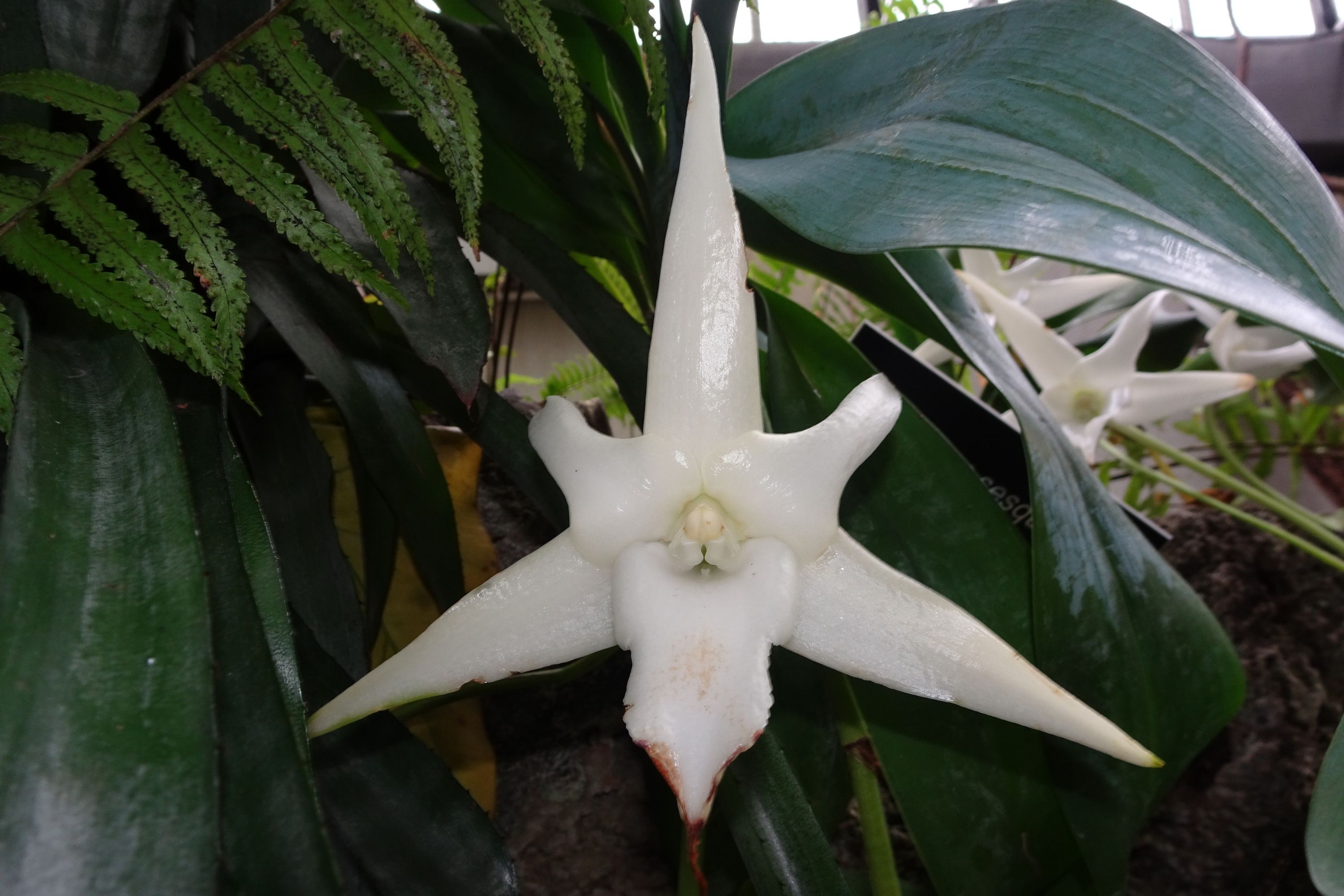Darwin's orchid
(Angraecum sesquipedale)

Description
Angraecum sesquipedale, also known as Darwin's orchid, Christmas orchid, Star of Bethlehem orchid, and king of the angraecums, is an epiphytic orchid in the genus Angraecum endemic to Madagascar. The orchid was first discovered by the French botanist Louis-Marie Aubert du Petit-Thouars in 1798, but was not described until 1822. It is noteworthy for its long spur and its association with the naturalist Charles Darwin, who surmised that the flower was pollinated by a then undiscovered moth with a proboscis whose length was unprecedented at the time. His prediction had gone unverified until 21 years after his death, when the moth was discovered and his conjecture vindicated. The story of its postulated pollinator has come to be seen as one of the celebrated predictions of the theory of evolution. Angraecum sesquipedale is a monocot with monopodial growth and can grow to a height of 1 m (3.3 ft). Its growth habit is rather similar to species in the genus Aerides. The leaves are dark green with a bit of a grayish tone and leathery with a bilobed tip. They are usually around 20–40 centimeters (7.9–15.7 in) long and 6–8 cm (2.4–3.1 in) wide. The roots are dark gray, thick, and emerge from the orchid's stem. There tend to be few roots and they attach to the bark of the trees quite strongly. Each of the succulent roots can extend along the trunk of the tree for several meters. There is also a variation of this species, namely A. sesquipedale var. angustifolium. A. sesquipedale var. angustifolium tends to be smaller than A. sesquipedale and has narrower leaves. The chromosome number of A. sesquipedale is 2n=42. A. sesquipedale has also previously gone by the synonyms Aeranthes sesquipedalis Lindl. (1824), Macroplectrum sesquipedale Pfitzer (1889), Angorchis sesquepedalis Kuntze (1891), and Mystacidium sesquipedale Rolfe (1904). It is often found in lowlands in Madagascar at altitudes below 400–500 feet (120–150 m), near the east coast of the island, and on trees that are at the edge of forests. Usually it is attached to trees with fewer leaves and to areas of the branch or trunk that are driest. This allows the plant to obtain a great deal of light and air movement. Larger plants are usually found growing within 12–20 ft from the ground, whereas smaller plants are often found higher up in the canopy.
Taxonomic tree:







